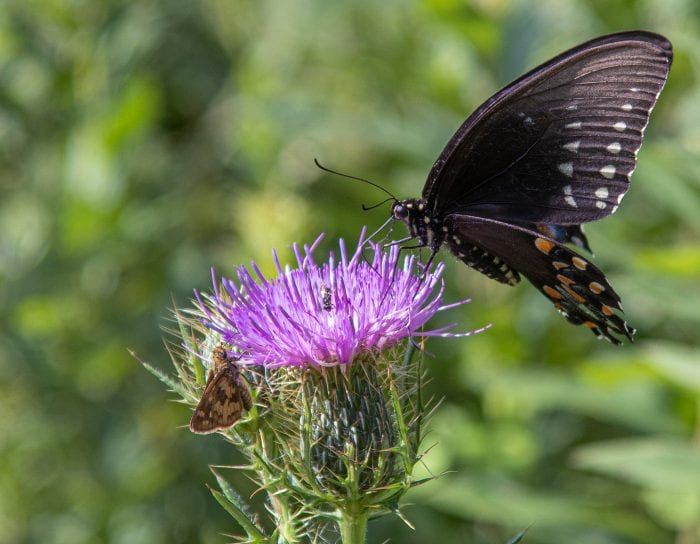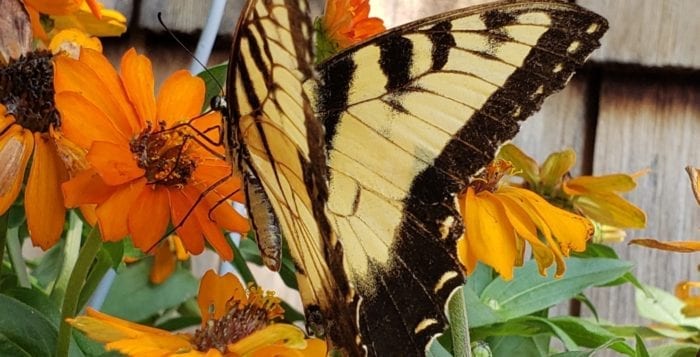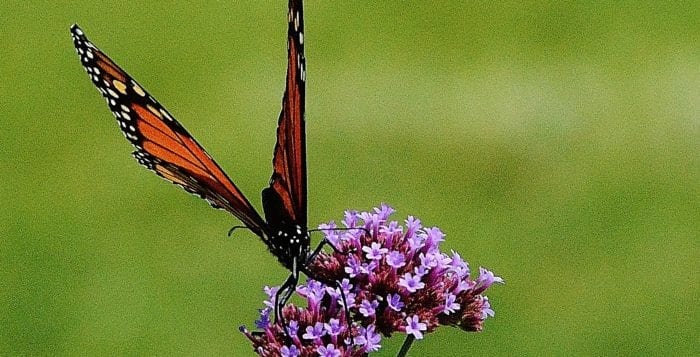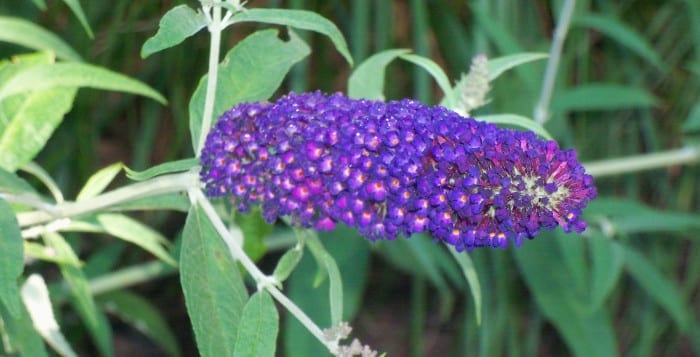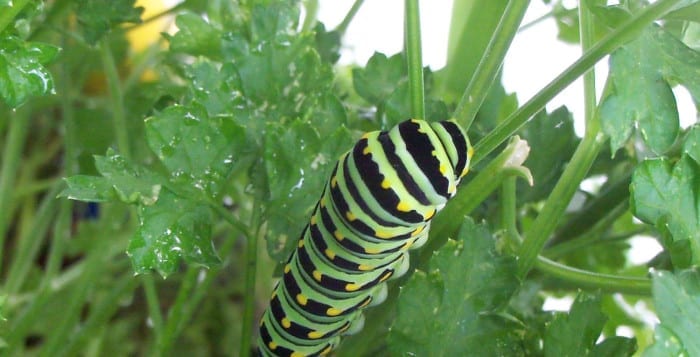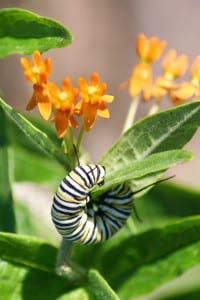By John L. Turner

Strolling up a slight incline on a trail pockmarked with pebbles the oak forest fell steeply away to my right. The warm spring air on this day in late April was most pleasant and welcome and I paused for a moment to bask in the warmth of a circle of sunlight reaching the ground through a small break in the tree canopy, happy winter was in the rear view mirror.
Numerous Flowering Dogwood trees were in blossom in the forest, adding a splash of white and pink to the understory, their flowers reminding me of a grouping of water lilies floating fifteen feet in the air, although they were at eye level because of the falling slope.
And suddenly movement — a butterfly is sailing toward me down the trail, turns in a half circle and lands in a foot square patch of sunlight with wings open, facing away so that its dark wings have the best angle to absorb the warmth the shaft of sunlight offered. A mourning cloak, a butterfly with a three inch wingspan, has joined my morning, an identification I make easily and instantly due to its highly distinctive coloration, which is unlike any other butterfly in eastern North America.
The mourning cloak, so named because its dark brown body with a pale yellow band along the outer wing margin is reminiscent of the attire once worn during funerals and other somber occasions, is a stunningly beautiful insect.
The derivation of the scientific name is a different story; Nymphalis antiopa relates to arcane Greek mythology. The brown of the body and wings is rich walnut in color and toward the wing edge numerous purplish-blue oval dots are patterned within a narrow band of black, this band adjacent to the aforementioned yellow band at the wing margin. Dark flecking is sprinkled throughout the yellow. Four small yellow wedges are positioned along the leading edge of the wings. Two prominent dark colored antennae project from the butterfly’s head, forming a classic letter vee.
The underside of the wings are as drab as the upper wings are showy. This adaptation helps the mourning cloak blend in on tree bark or leaf litter if it falls to the ground and plays dead, as it sometimes does to avoid predation. If it decides instead to flee it can erupt fast, emitting an unusual clicking sound (which I’ve never heard) which reportedly disturbs birds.
The mourning cloak is typically the first butterfly to emerge in the spring because it overwinters as an adult; no need for springtime pupation and metamorphosis as with other butterflies. Adults spend the winter in surprising fashion — hibernating beneath flaking tree bark, in tree cavities and in the cracks of larger rocks. They are able to survive the winter because they have “antifreeze” in their blood and cells — sugar compounds (glycerols) which lower the temperature at which the insect would freeze. Once it emerges it rapidly shivers its flight muscles helping the butterfly to warm up. Its dense hairlike bristles help to hold the muscle-generated heat inside.
Another surprise in a butterfly with several surprises is that, once it emerges, it doesn’t depend upon, or much utilize flowers and their sugary nectar, although the species will occasionally visit them. Rather, they depend upon tree sap, the moisture and sugar in fallen fruits, the sweet exudate of aphids, mud puddles, even animal dung. Due to the fact this butterfly came out of pupation last summer means it is — as far as insects go — a long lived insect, having a lifespan as much as ten to twelve months.
Not surprising, given its ability to survive frigid temperatures, the mourning cloak is found in temperate and cold regions all across North America, Europe and Asia. In England it’s known as the ‘Camberwell Beauty’; the species was first discovered in England at Camberwell in 1748 and the discoverer, Moses Harris, suggested the name. It also ranges south and is known from Central and South America.
If the mourning cloak mates, egg laying takes place with the eggs laid on one of a wide range of host plants including various willows, aspen, birch, hackberry, elm, hawthorn, cottonwood, poplar and mulberry, among others. The eggs are laid in long clusters along the stem near its tip and they are as beautiful as they are geometrically distinctive; they remind me a little of the dome of the U.S. Capitol. I wouldn’t blame you if you stopped reading here and “Google image” the eggs. It’s worth the effort.
At first, when small, the caterpillars stay together but after going through growth stages known as instars they separate. A mature caterpillar is black with eight orange dots and is heavily spined which, if touched, can irritate the skin. The pupa, the case in which the miracle of metamorphosis occurs, is also spined. On Long Island the butterflies emerge in early to mid-summer and will, if the weather grows hot, aestivate (kind of like hibernation in the summer). Another emergence can occur in the fall.
As with so many elements of the natural world, butterflies unfortunately are declining in abundance and mourning cloaks are no exception. In a recently published study measuring population trends of North American butterfly species, the mourning cloak has declined by about 22% over the past quarter century. This alarming decline appears due to a combination of continued widespread pesticide use, climate change, and habitat loss.
How can you help this iconic harbinger of spring? By foregoing the use of pesticides, leaving on your property standing dead and dying trees with their sheltered protective cavities and sloughing bark, and supporting organizations devoted to butterfly conservation such as the Xerces Society.
A resident of Setauket, author John L. Turner is a naturalist, conservation co-chair of the Four Harbors Audubon Society, and Conservation Policy Advocate for the Seatuck Environmental Association.


